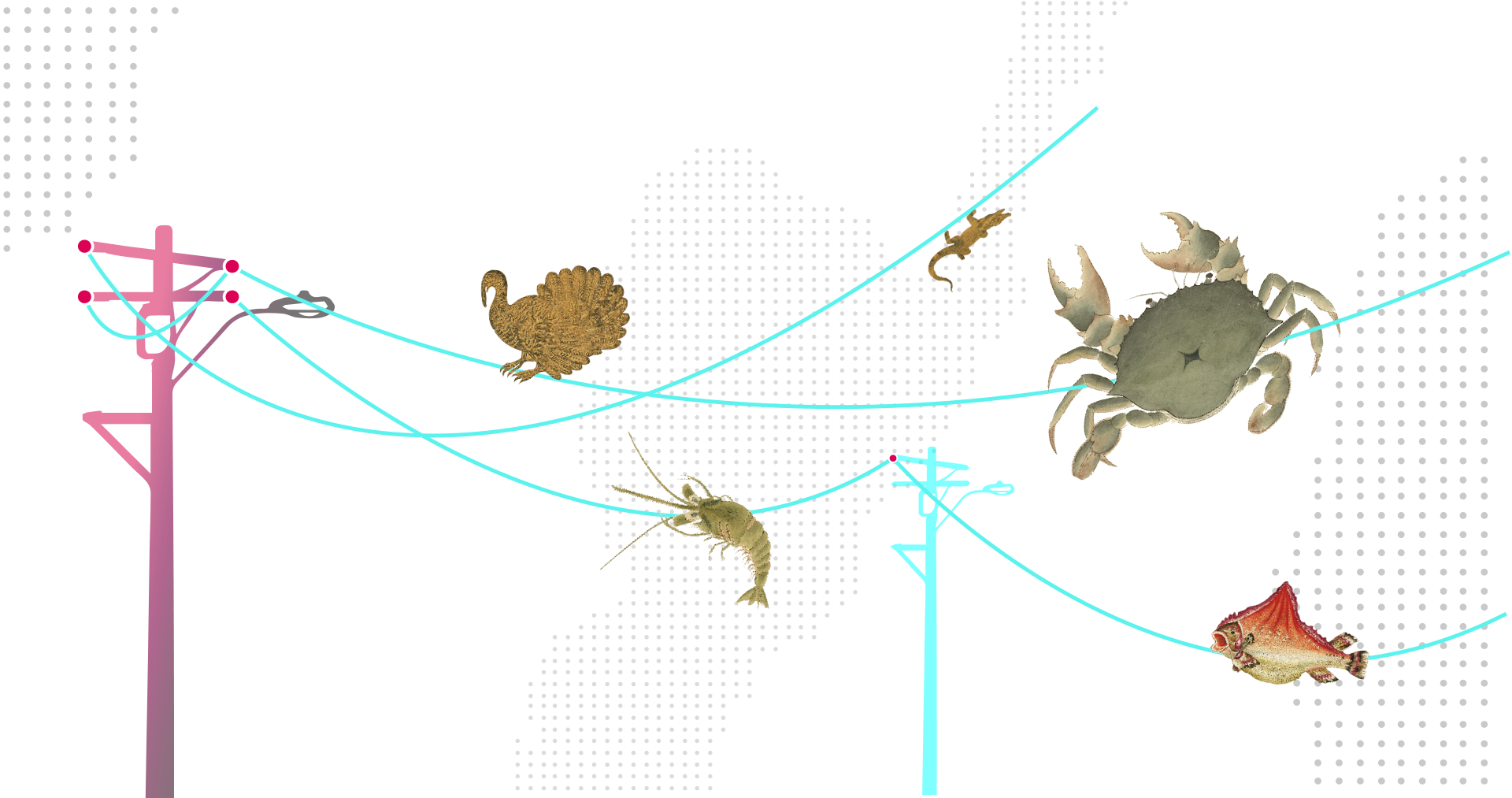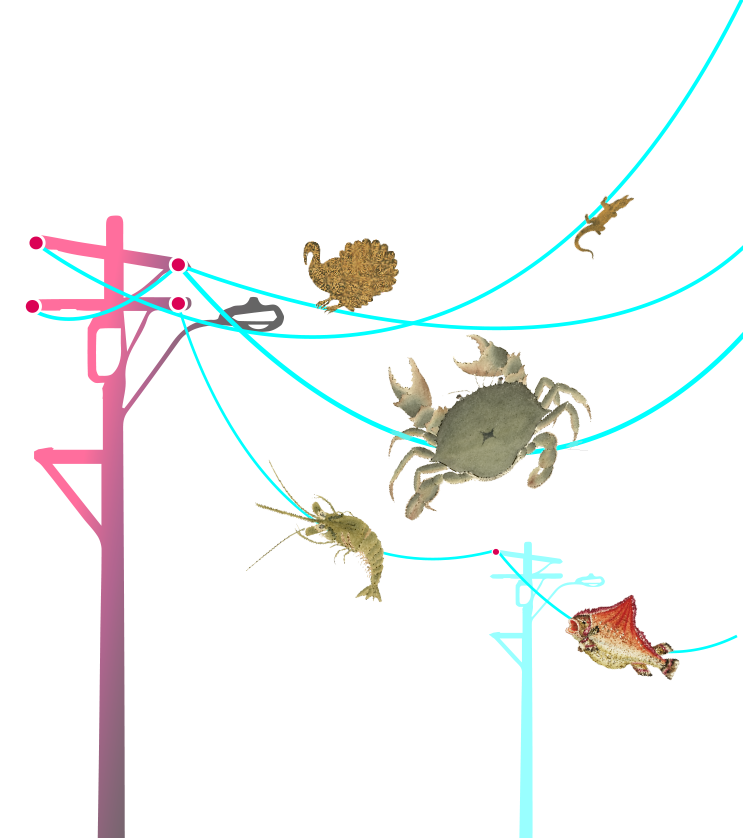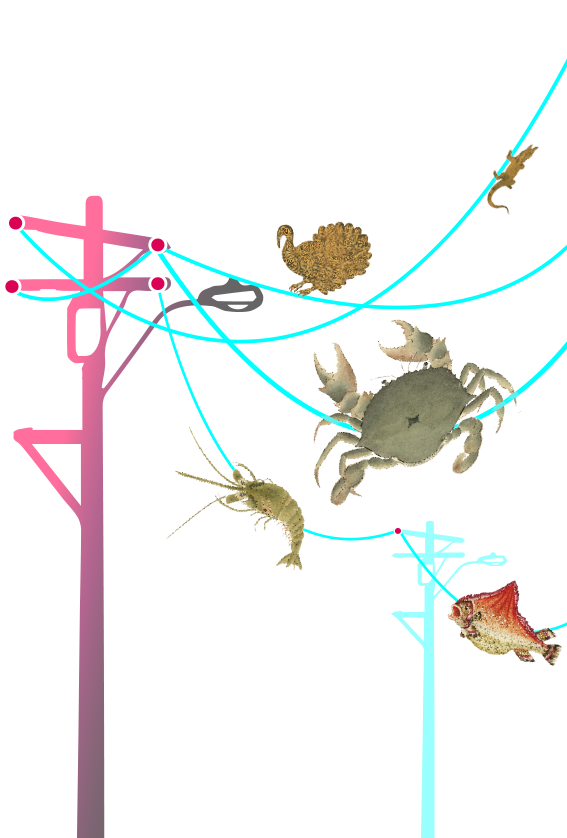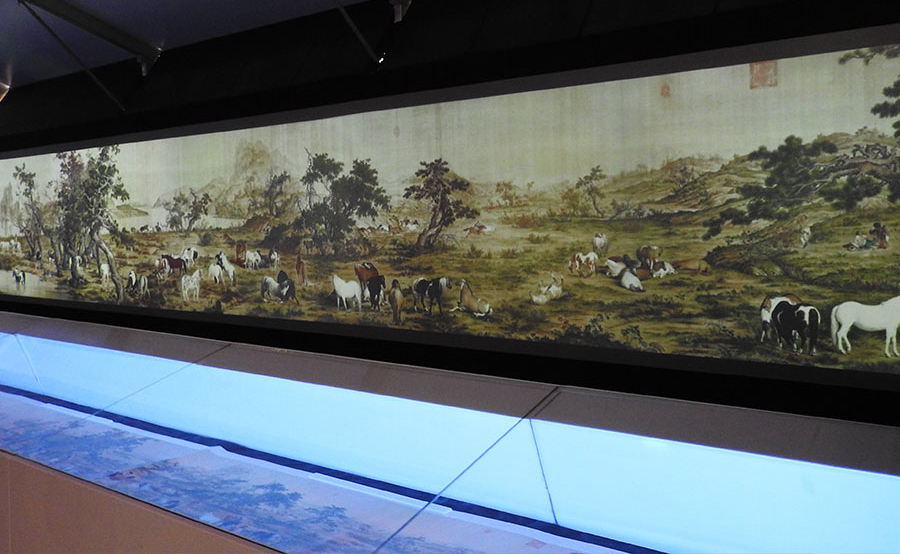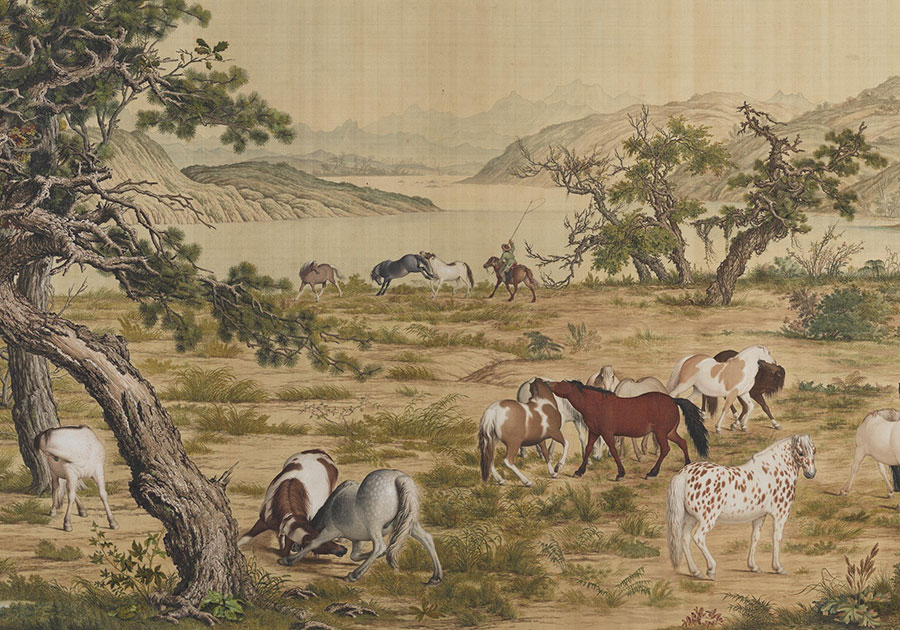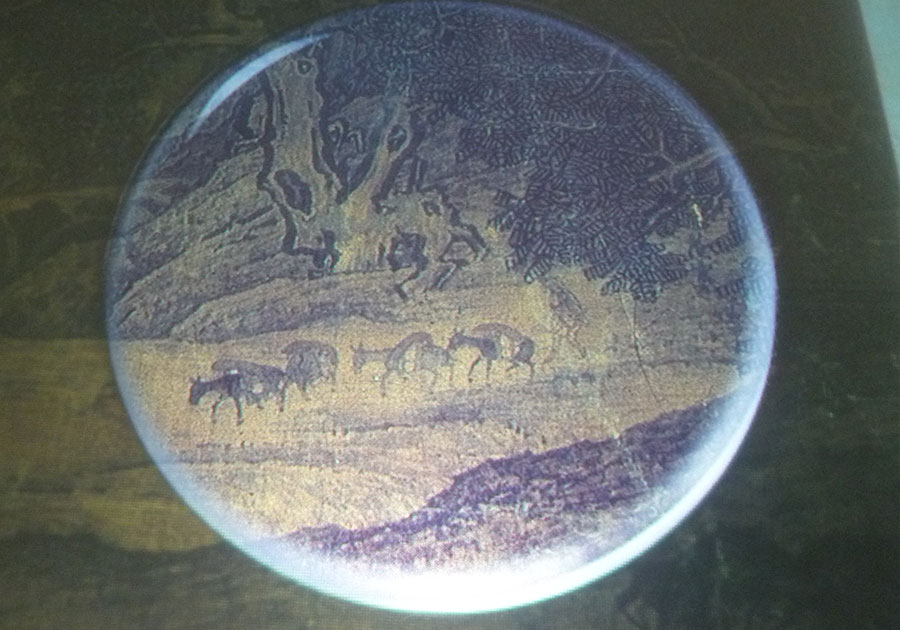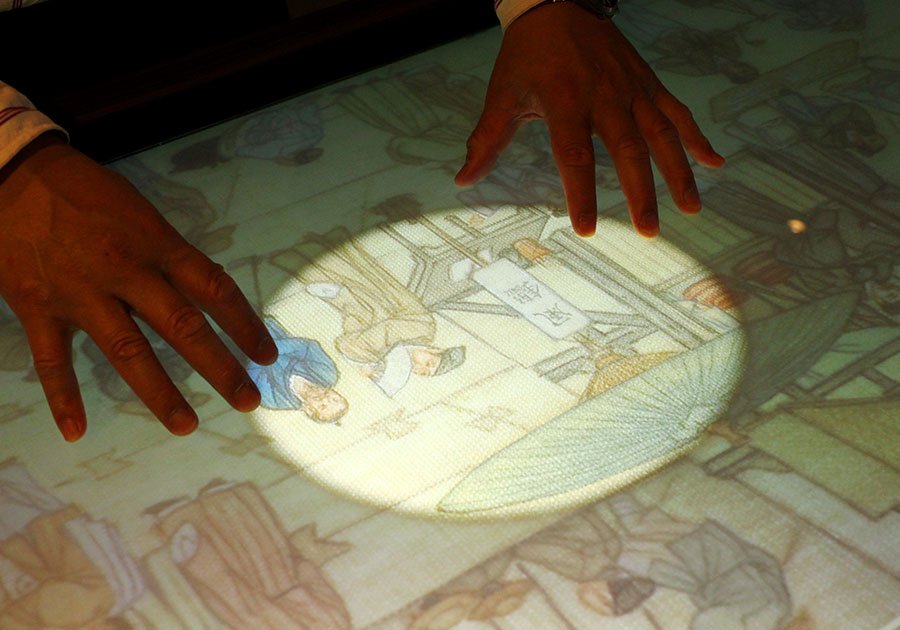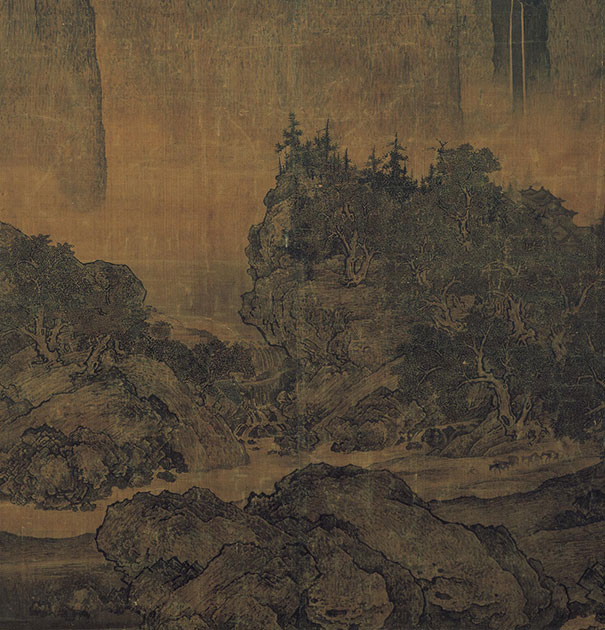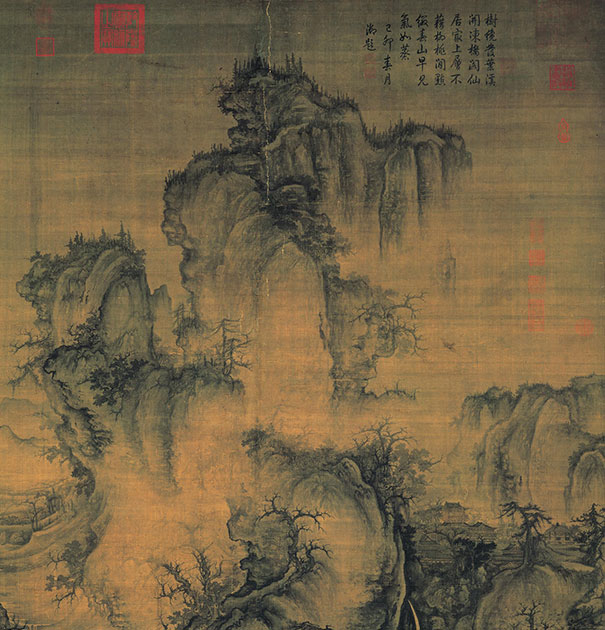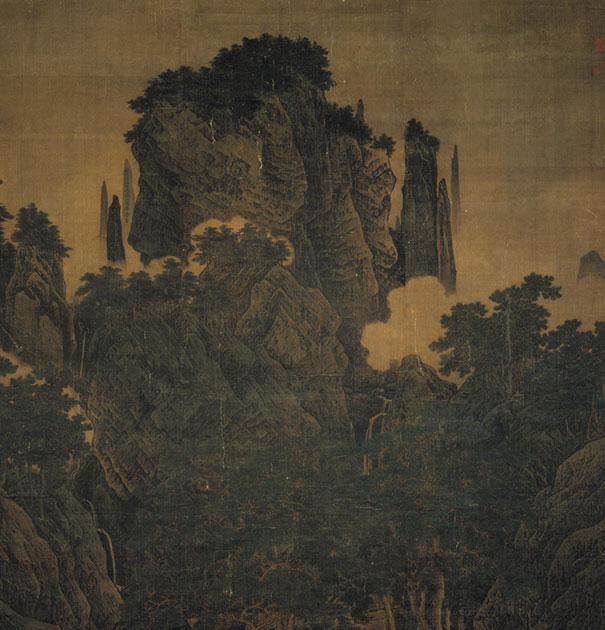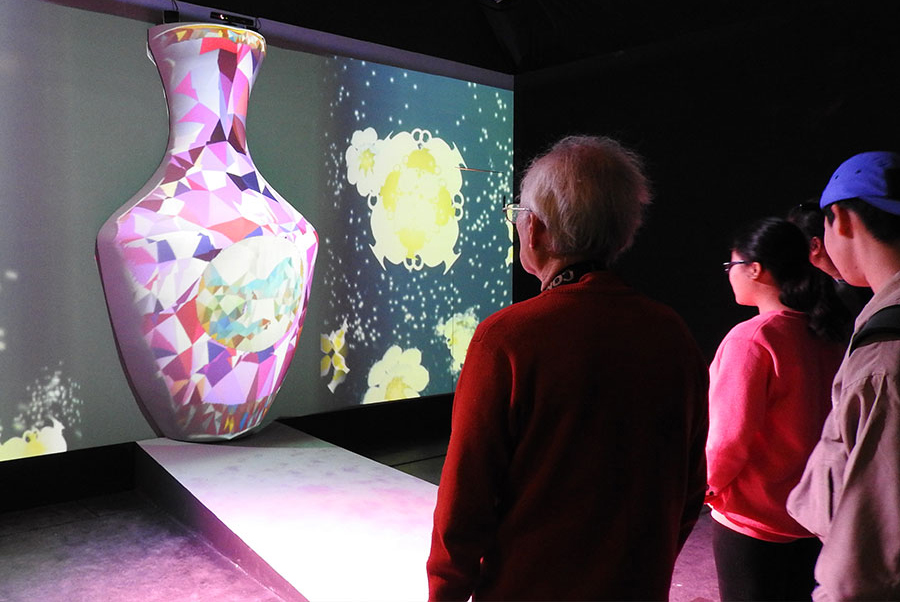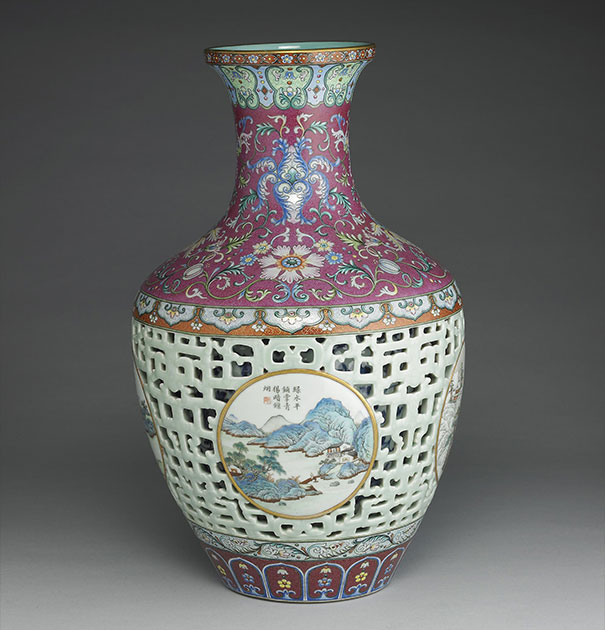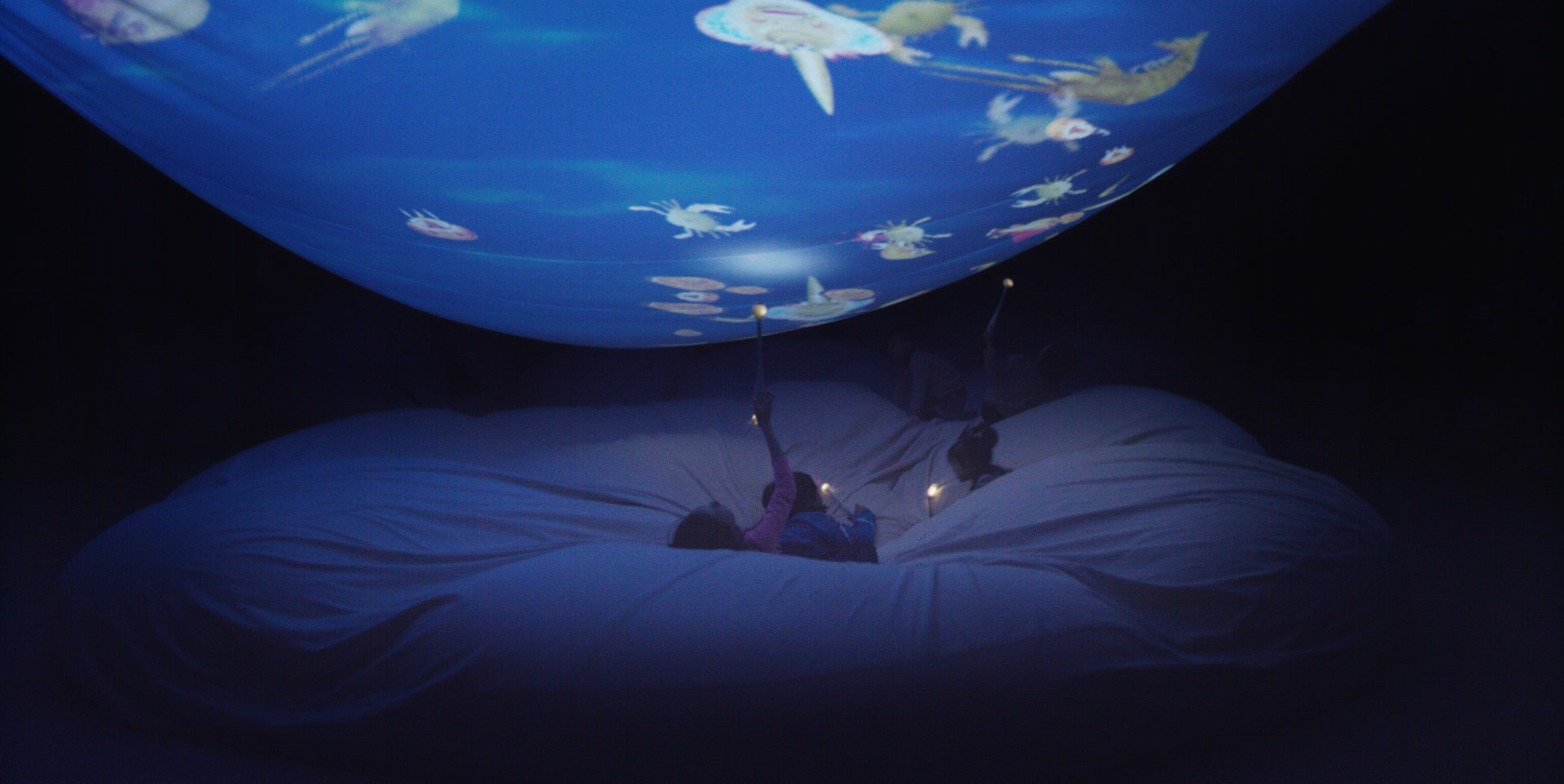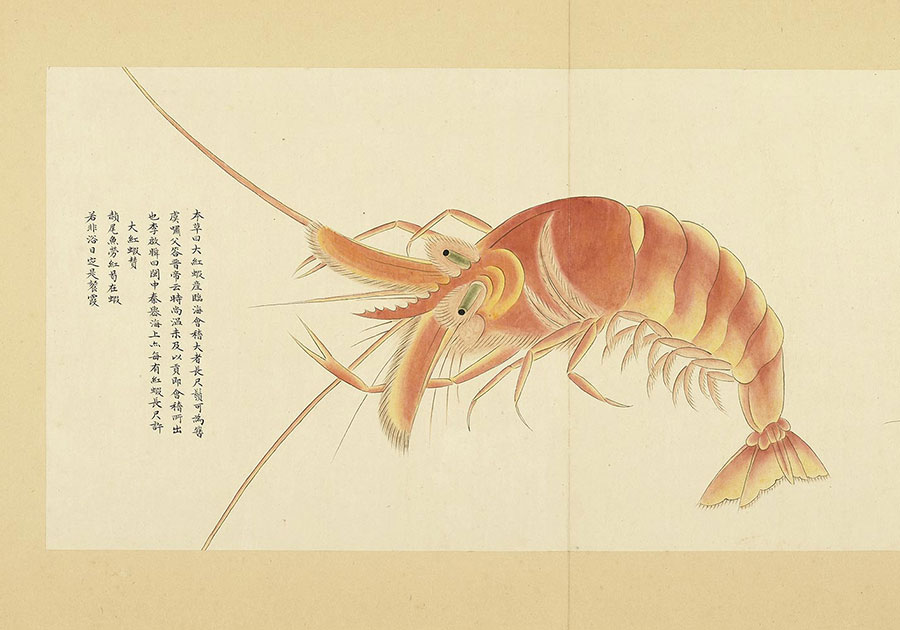This section introduces NPM's classic landscape paintings and Rich and Varied Products of the Sea, a Qing dynasty compendium that imparts knowledge of fascinating sea creatures. The first in this series is a large-scale animated projection of the famous painting One Hundred Horses by Italian missionary and painter, Giuseppe Castiglione (1688-1766). In the exhibits "Must See Paintings and Calligraphies Interactive Tabletop" and "NPM Best Selections," viewers are able to compare the different styles of the NPM's classic Chinese landscapes and their variations under western influence. Another interactive piece in this series, Tree of Colors, is inspired by the delicate landscapes painted on vases. After wandering amid spectacular landscapes, let us now turn our attention to the boundless ocean. Do you know how people living 300 years ago perceived the ocean? After traversing different terrains, the NPM utilizes interactive sensor technology to introduce Rich and Varied Products of the Sea, allowing viewers to submerge under the waves and explore the fascinating beauty and wonders of nature.
Painting Animation: One Hundred Horses
The production basis of this film is to remain loyal to Giuseppe Castiglione's original masterpiece One Hundred Horses. By incorporating the latest high-end animation technology, a herd of horses from the painting is gorgeously rendered and vividly presented before the audience, especially poses and activities such as playfully wrestling, leisure and recreation, galloping or ford crossing. The story revolves around officers tending to horses throughout the day, starting from the break of dawn and morning activities, to afternoon thundershower, evening dusk and returning home under the starry night. Audiences can fully experience changes around the clock and appreciate the beauty of nature as it alternates between sunshine and rain.
One Hundred Horses
- Lang Shining (Giuseppe Castiglione, 1688-1766)
- Qing dynasty Handscroll, ink and colors on silk, 94.5 x 776 cm
Giuseppe Castiglione achieved marvelous results in painting during the Yongzheng reign (1723-1735), his monumental masterpiece of "One Hundred Horses" being completed then. This long handscroll depicts a hundred steeds by a riverbank, the horses appearing in different manners and poses. Some are at leisure and peace, while others romp with energy, making this painting of a hun-dred horses exceptionally varied.
The handscroll begins at the right with two stately pines trees filling the surface, skillfully setting the stage for scenery that is nearly eight meters long. With a consistent horizon and height maintained throughout, Giuseppe Castiglione presents horses being led to pasture on the plains, a horse being bathed by the bank, horses crossing water, and a vast and deep vista that present fascinating views of these majestic animals.
Must See Paintings and Calligraphies Interactive Tabletop & NPM Best Selections
As the NPM's collections are fragile and difficult to preserve, the museum's artifacts can only be temporarily on view. In light of this, the NPM produced "Must See Paintings and Calligraphies Interactive Tabletop & NPM Best Selections" to display select digital works through interactive tabletops, liberating the NPM's collection from the limitations of time and location. Upon approaching the interactive tabletop, viewers are able to select a painting and magnify or minimize and view the details of the works as desired. Audiences are able to survey the paintings at close range and explore the spirit of ancient landscape painting and the natural world within each stroke, and further recognize whether these historical representations correspond to the natural surrounding of our own time.
NPM Best Selections
Travelers Among Mountains and Streams
- Fan Kuan (ca. 950-ca. 1031), Song dynasty
Fan Kuan (style name Zhongli), a native of Huayuan (modern Yaoxian, Shaanxi), excelled at landscape painting. Later, after years of observing Nature, he was able to form a style of his own. This painting employs a tripartite composition and features a rocky promontory centered in the foreground with a donkey caravan below and lofty peaks in the background rising to form a range of monumental mountains. The base of the mountains is left blank to indicate enveloping mists while also to highlight the effect of distance and separation. The forms throughout the work are rendered with angular outlines in ink, the texturing within the landscape elements done in short strokes similar to raindrops, thereby simulating the geological characteristics of rocks and mountains there. The monumental range looms over the tiny figures in the caravan, creating a dramatic contrast that expresses an awe-inspiring appreciation of the majestic forces in Nature. In the lower right area, hidden among the trees, is the signature for "Fan Kuan."
Early Spring
- Guo Xi , Song dynasty
Along the left side of the painting is a signature that reads, " 'Early Spring' painted by Guo Xi in the 'renzi' year (1072)." It also bears a seal for "Brushed by Guo Xi." A native of Wenxian in Heyang, Guo Xi was active under Emperor Shenzong (r. 1067-1084) and did paintings for the court, living beyond the age of 80. This is an important representative work surviving from the hand of Guo Xi, successfully expressing the vitality of a spring scene by means of a monumental landscape composition. Following the central axis of the painting, an array of rocky features, large pines, the main mountain, and distant peaks wind back and forth, connecting to create a dynamic mountain form filled with energy. The use of brush and ink here is even more skillful, the activities of figures in the painting done with delicacy to construct a fine scene where one can live and travel vicariously.
Wind in Pines Among a Myriad Valleys
- Li Tang, Song dynasty
On one of the peaks left of the main mountain is a signature that reads, "Brushed by Li Tang of Heyang in spring of the 'jiachen' year (1124) of the Xuanhe reign of the Great Song." Li Tang (style name Xigu), a native of Heyang (Mengxian, Henan) was active from the late Northern to early Southern Song. In a secluded valley grows a luxuriant forest of pines as a torrent of spring water flows downward. Although the mountain forms are layered densely, there is still a sense of space between them. With small "axe-cut" strokes to texture the mountain forms, to which washes of light and dark blue and green were added, the solidity and luster of the mountains form a unique effect. The light and dark coloring of the pine needles also creates a flourishing and dynamic effect. The pine forest of the foreground and overlapping water and mountain forms behind reveal a painting method that expresses deep distance.
Tree of Colors Interactive Installation
Tree of Colors uses kinect to detect the colors that people are wearing in a designated area and arranges the colors into a collage on the digital model of a flower vase, presenting ancient artifacts that are simultaneously rich in individualistic colors. The projection of flower vases and pots resembles a parade of individual fashion shows. Artistic creation begins with picking out the colors of your own outfit!
Vase in yang-ts'ai enamels with incised pattern of flower brocade, and double layer openwork 1743 (Qian-long reign)
The exterior of the vase can be separated into the upper and lower surface decorations. The upper half of the vase begins from the mouth to the shoulder of the vase, and is richly embellished with illustrations of western floral patterns and circling shapes. The body and lower surface decoration consists of four circular paintings of seasonal landscapes and figures. The blank area at the base of the vase contains inscriptions of the characters "Produced by Qing Emperor Qianlong" in three lines.
Marvels within the Sea Immersive Interactive Theater
The vast ocean is home to infinite organisms and has supplied mankind for generations. Do you want to know how the ancients perceived the ocean and its abundant life forms? This installation was inspired by Rich and Varied Products of the Sea, a compendium of fascinating sea creatures by 18th century Qing Dynasty painter Nie Huang, demonstrating the integration of science and art at the time.
Featuring the otherworldly sea creatures depicted in the compendium, the installation renders the artist's extensive knowledge of natural history. The exhibit is based on interactive technology, light and sound effects and provides viewers with a novel experience of the NPM's digital new media works, welcoming visitors to travel back in time and explore the ocean depths of yore.
Rich and Varied Products of the Sea
- Nie Huang, Qing dynasty (1644-1911)
- Album leaf, ink and colors on paper, 30.4 x 68 cm
"Rich and Varied Products of the Sea" is in four albums, the first three in the Beijing Palace Museum and the fourth at the National Palace Museum. This album depicts such marine life as horseshoe crabs, snails, crabs and shrimp. With no seal or signature of the artist, each painting has a title and explanation of praise in regular script.
The preface to the first album states that in the summer of 1698, Nie Huang traveled to Fujian and visited coastal areas. Nie, a native of Qiantang (modern Hangzhou, Zhejiang), traveled all over the land for nearly 20 years, in 1687 illustrating 30 crabs in his "Manual of Crabs." He later gathered illustrations of the many sea creatures he had seen and heard of to paint them in "Rich and Varied Products of the Sea."
